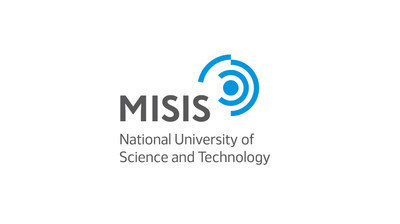Subject: SVY
Platinum with Boron Nitride to Help Solve the Problem of Harmful Emissions from Cars, Reports NUST MISIS
MOSCOW, Dec. 6, 2021 /PRNewswire/ -- Scientists from NUST MISIS have developed a new hybrid material showing efficiency in the complete conversion of carbon monoxide into non-toxic carbon dioxide already at 190 degrees Celsius. The obtained material can already be tested in systems for cleaning harmful emissions at industrial enterprises. The study has been published in the Applied Catalysis B Environmental journal.

Carbon monoxide (CO) is one of the most harmful gases in industrial emissions. It is released when materials that include carbon (gasoline, natural gas, diesel fuel, coal, wood, etc.) burn. The main producers of carbon monoxide are the energy sector and road transport. To get rid of the carbon monoxide in the car emissions, catalytic converters which oxidize it to non-toxic carbon dioxide are used. However, due to the increase in efficiency of modern engines, accompanied by a decrease in exhaust gas temperature, catalysts lose efficiency and the carbon monoxide content in them increases.
To solve this problem, chemists are actively looking for new types of catalysts for the oxidation of carbon monoxide that can operate at relatively low temperatures - up to 150 degrees Celsius. Today, the most effective catalysts are based on noble metals, which can significantly reduce the temperature of the oxidative reaction. Among such metals, scientists are especially interested in platinum and gold.
An international group of scientists led by Andrei Kovalsky, a senior researcher at the NUST MISIS Inorganic Nanomaterials Research Laboratory, has synthesized new materials based on platinum and gold nanoparticles with hexagonal boron nitride as a carrier matrix. The resulting platinum-based (Pt/BN) materials can be used to convert carbon monoxide at low (in industrial terms) temperatures. Hybrid nanoparticles based on gold have shown more modest characteristics in the oxidation of carbon monoxide, but the prospects for their application are not limited to chemical catalysis. In particular, such materials can be considered transport agents for the targeted delivery of therapeutic drugs.
For Pt/BN particles, scientists have used a method of reproducible synthesis in several stages. First, boron nitride nanoparticles are crushed (dispersed) in an aqueous solution of a platinum salt, homogenized (i.e., the homogeneity of the resulting substance increases), then dried and finally processed in a hydrogen flow at an elevated temperature to reduce the platinum salt to metal. As a result, platinum particles with a size of only about 4 nanometers are uniformly distributed over the surface of ceramic boron nitride nanoparticles. From the point of view of catalysis, the most effective materials are those with a concentration of platinum nanoparticles of about 4% of the total mass of the substance. The study has shown that such materials demonstrate catalytic activity at temperatures below 100 degrees Celsius, and full conversion of carbon monoxide is achieved already at 190 degrees. For comparison, materials with a similar concentration of gold nanoparticles begin to work at temperatures from 150 degrees Celsius, and, accordingly, full conversion occurs at temperatures of 300-350 degrees.
"The studies allowed us to deeply understand the processes occurring at the ceramic/metal interface in various mechanisms of catalysis, which will allow us to optimize and significantly reduce the cost of methods for obtaining already existing reactions, as well as create new effective heterogeneous materials for vital technological reactions," explains Andrey Kovalsky.
The material developed by the researchers can already be tested in systems for cleaning harmful emissions at industrial enterprises. In the future, provided the conversion temperature is reduced, such materials can probably be used to reduce the proportion of carbon monoxide in the car exhaust.
Link: https://en.misis.ru/university/news/science/2021-11/7657/
Logo: https://mma.prnewswire.com/media/955872/NUST_MISIS_Logo.jpg
These press releases may also interest you
|
News published on and distributed by:



